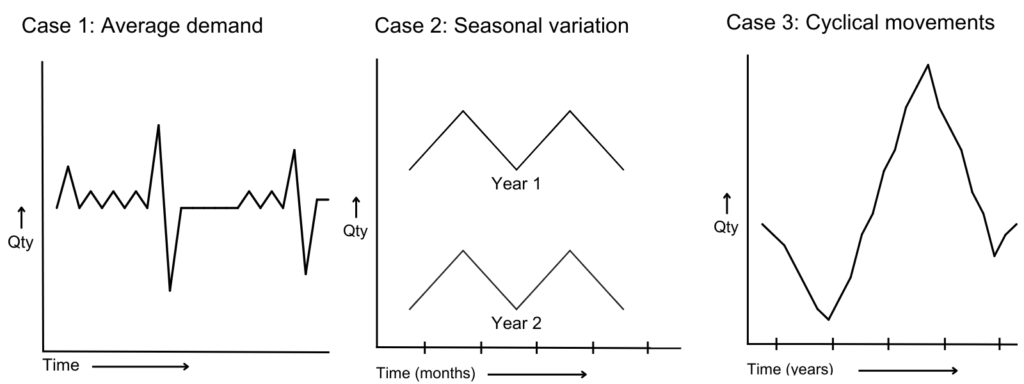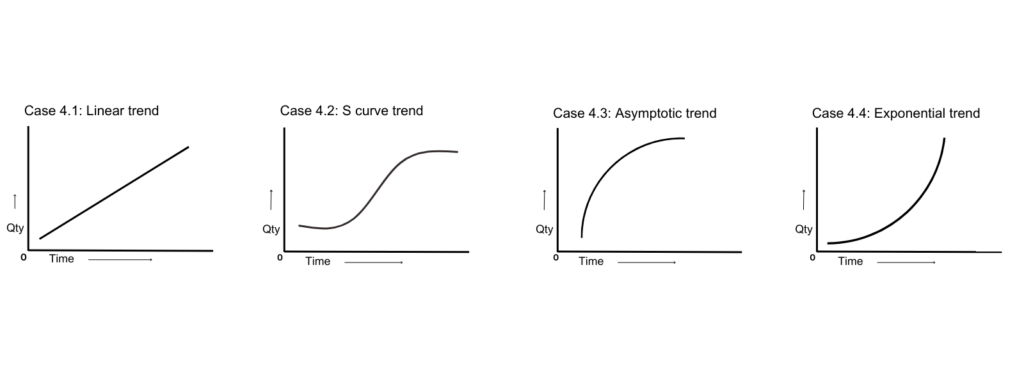Why do companies forecast the demands of a product?
Let’s say you are in the business of selling cars. Consider you have 3 models to manufacture models 1, 2, and 3 and you have 100 cars of each model. After a week, you are left with 0 cars of the first model, 20 units of second and 40 cars of third model. If a new customer wants to buy your first model, then you lose a customer because of improper planning. Later on, you realize that you aren’t able to sell the cars of Model 3, as new models have already hit the market. This results in a loss of profit and manufacturing costs that you have spent. Now, had you manufactured more cars of model 1 and less of model 3, you would have avoided this situation.
So, this ability to predict future demand for goods or services is known as demand planning and forecasting. It is very difficult to predict an accurate forecast. However, accurate forecasting can help reduce lead times and inventory levels. It also helps in the accurate planning of the number of resources needed.
Demands can be broken down into multiple components. A time series is the result of a number of movements that are caused by numerous economic, political, and natural factors. If we decompose the past data, we will find five main components of the data.
- Average/stationary demand: This component of demand assumes that although customer demand per unit time fluctuates, there is no apparent long-term underlying growth or trend.
- Seasonal variation: These are fluctuations that occur periodically (weekly, monthly, or quarterly) with a high degree of predictability. For example, the sales of umbrellas go up in the rainy season, and the sales of cold drinks are high during the summer.
- Cyclical movements, also called oscillatory movements, are over a longer duration of time (more than a year). Cyclical movement may come from occurrences such as elections, war, economic crises, etc. Let us look at the years when economic crises hit the U.S. to understand the cyclical movements.
- Trend: Over a period of time, the demand can have a tendency to move upwards or downwards. This is known as a trend. There are four important trends.


What are the qualitative techniques of demand forecasting?
Let us look at some of the most commonly used qualitative methods of demand forecasting.
Sales force estimates: Companies divide the geographic area of their business into regions and place their sales force in these regions. The sales force of the company is in direct contact with the customers in that region. Hence, they have a good understanding of future demands. So, the sales force is asked to estimate future demands. They are generally asked to submit three estimates: optimistic, most likely, and pessimistic. The marketing manager will compile all these estimates to arrive at the final forecasted demand.
Executive opinion: When a new product or service is launched, the sales force may not be able to make demand estimates. In those circumstances, executive opinion is sought in order to do forecasting. It is a forecasting method in which the opinions or experiences of one or more managers are combined to arrive at a single forecast. Managers of different areas such as marketing, finance, HR, and operations are brought together to give their opinion on the forecast of a new product to be launched.
Customer survey: Market research is a qualitative method of demand forecasting. They are the ones who determine the demand for a product or service. It is useful to involve the customers directly in the forecasting process. At the same time, we need to select a few people as the sample population because we may not know who our new customers will be. Questions need to be framed properly in order to get accurate responses from customers. Surveys can be time-consuming and expensive, but they may provide valuable insights on customer change or behavior that other methods may not provide.
The Delphi method: A quantitative method of demand forecasting, is a process of gaining consensus from a group of experts while maintaining their anonymity. A questionnaire is then sent out to the group of experts, who are from various diversified streams. An example could be how many years electric cars are going to dominate the auto sector. Here, the experts may not necessarily be the top executives. The opinions of experts are then tabulated. These results were again redistributed, and we asked for feedback. It is again tabulated and sent to the experts. This process is continued through various iterations until a consensus is reached.
Simple moving average: One of the types of forecasting techniques
When there is no trend or seasonality, this method is very useful to forecast the demands. In this method, we have to calculate the average demand for the most recent time periods. This average becomes the forecast average for the next demand.
In order to forecast the following period, we will drop the oldest demand that we had considered in the previous formula and consider the actual sales when the month is completed.
Weighted moving average: One of the types of forecasting technique
In the simple moving average, equal weights are given to the demands. But a weighted moving average suggests that we give different weights to different values of data. For instance, if the recent value has 70% weight, the previous one has 20%, and the oldest one has 10%, The forecast has a higher tendency to follow the actual sales and a lower tendency to follow the sales for the month.



























